Genetics
1/32
There's no tags or description
Looks like no tags are added yet.
Name | Mastery | Learn | Test | Matching | Spaced |
|---|
No study sessions yet.
33 Terms
DNA is found in the [...] of cells and contains [...].
DNA is found in the nucleus of cells and contains genetic material, which carries the instructions for an organism’s development, functioning, growth, and reproduction.
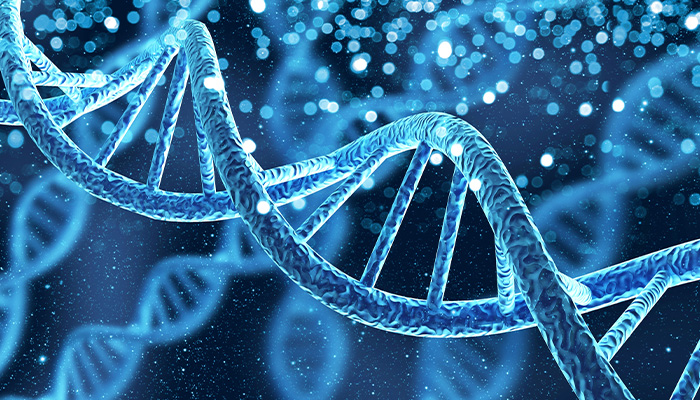
DNA controls [...] traits and is passed from [...] to [...].
DNA controls hereditary traits, such as eye colour, hair type, and susceptibility to certain disease. It is passed down from parents to offspring, ensuring the inheritance of genetic information across generations.
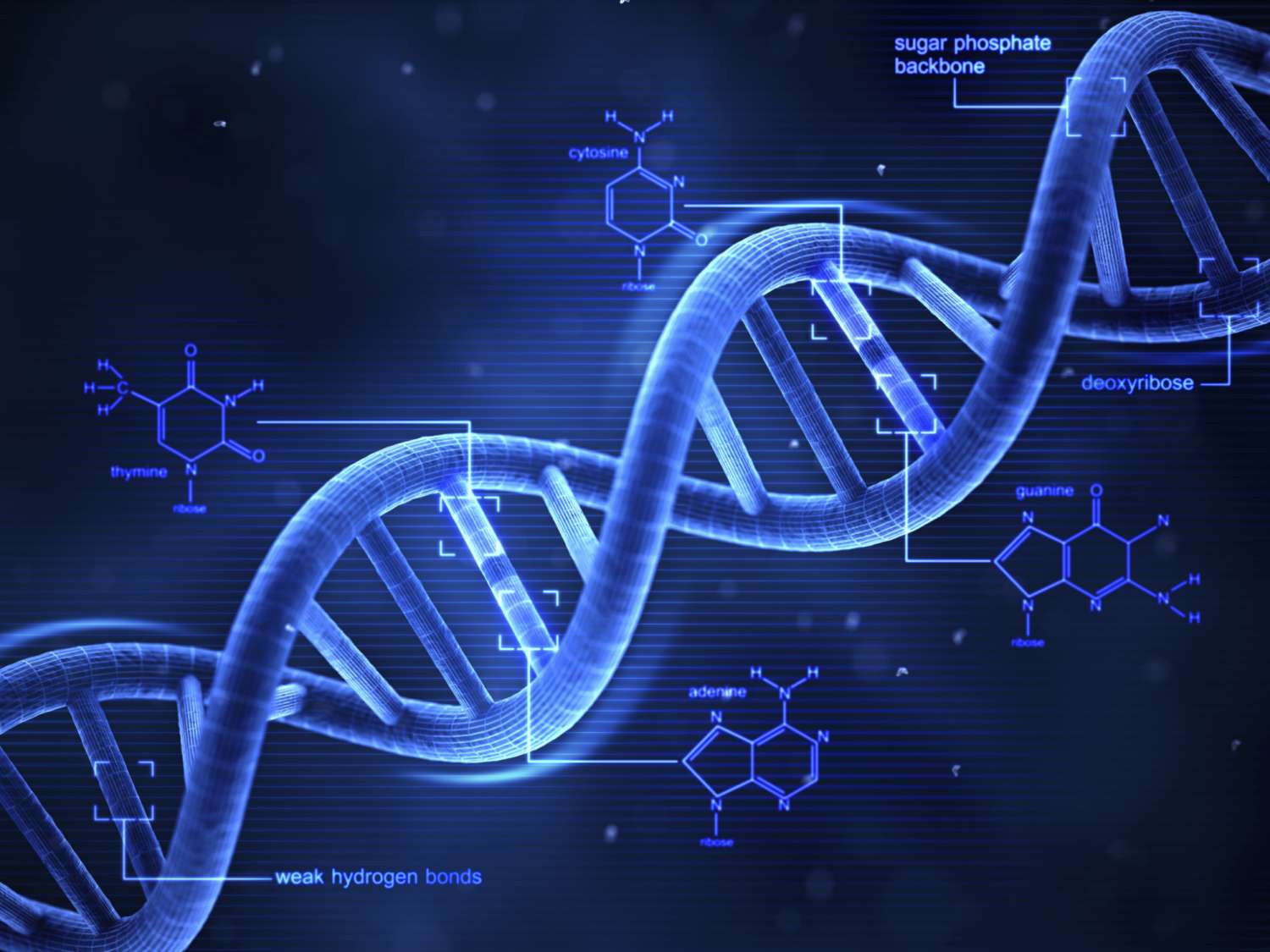
DNA is a [...], made up of repeating units called [...], which are the building blocks of DNA.
DNA is a double helix, made up of repeating units called nucleotides, which are the building blocks of DNA.
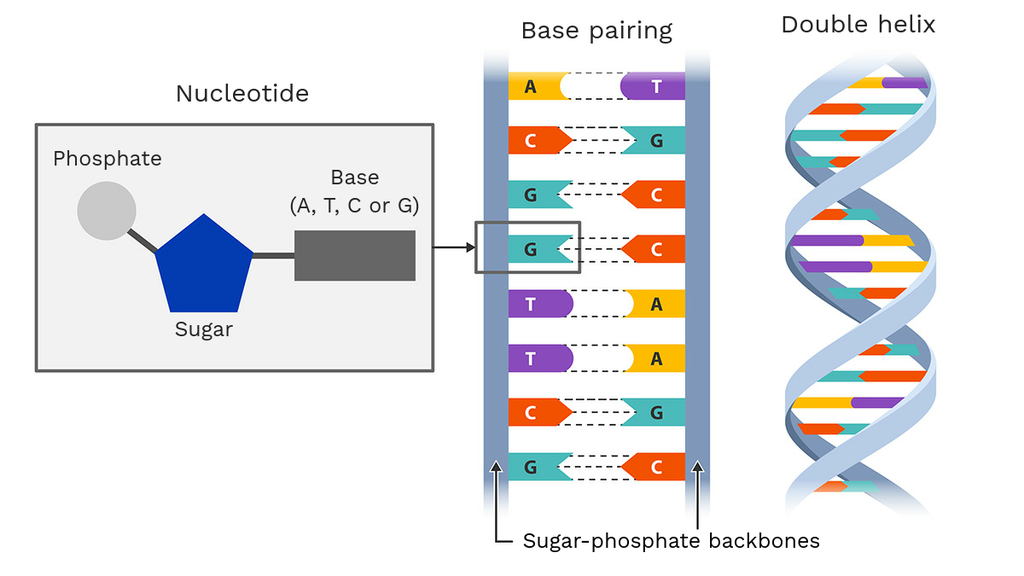
Each nucleotide consists of three components: a five-carbon sugar called […], a […] group, and a […] base.
Each nucleotide consists of three components: a five-carbon sugar called deoxyribose, a phosphate group, and a nitrogenous base.
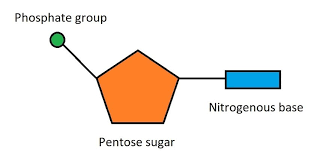
The four nitrogenous bases in DNA are […], […], […] and […]. These bases are critical for […] genetic information.
The four nitrogenous bases in DNA are adenine, thymine, cytosine and guanine. These bases are critical for encoding genetic information.
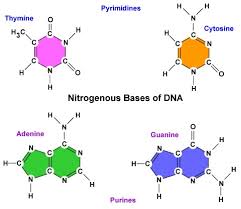
[…] is the process by which a cell makes an […] of its DNA before it divides. This ensures that each new cell receives a complete and identical set of genetic instructions.
DNA replication is the process by which a cell makes an exact copy of its DNA before it divides. This ensures that each new cell receives a complete and identical set of genetic instructions.

1. DNA is unzipped by […].
1. DNA is unzipped by helicase.
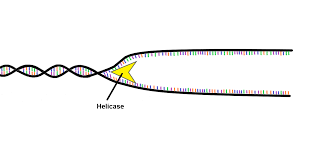
2. The complementary bases are added to each template strand by […].
2. The complementary bases are added to each template strand by DNA polymerase.
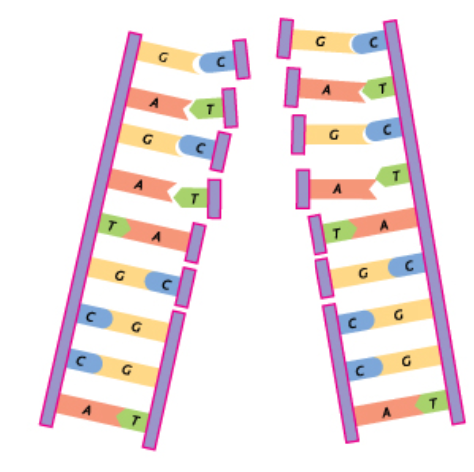
3. We have 2 identical strands which use […] replication.
3. We have 2 identical strands which use semiconservative replication.
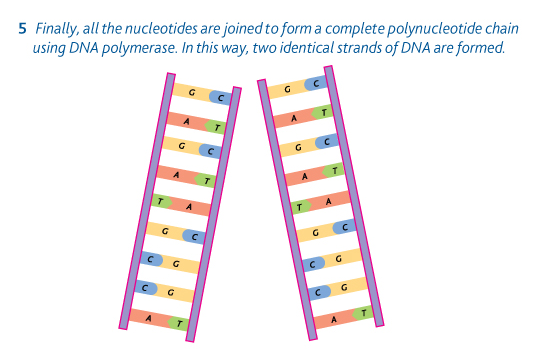
DNA replication happens in the […] (control centre of the cell).
DNA replication happens in the nucleus (control centre of the cell).
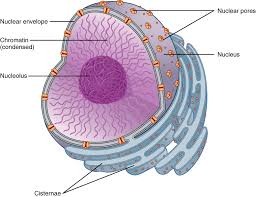
DNA replication happens before […].
DNA replications happens before cell division.
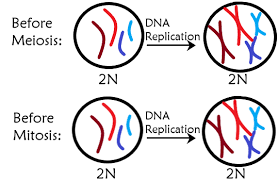
[…] are […] structures in the nucleus made of coiled DNA, which carries […] information.
Chromosomes are threadlike structures in the nucleus made of coiled DNA, which carries genetic information.
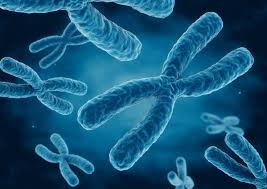
Humans have a total of […] chromosomes which are organised into […] pairs within each cell.
Humans have a total of 46 chromosomes which are organized into 23 pairs within each cell.
[…] is a form of cell division that occurs during the […] and […] of cells. A diploid cell (46 chromosomes) divides into two genetically identical daughter cells.
Mitosis is a form of cell division that occurs during the growth and repair of cells. A diploid cell (46 chromosomes) divides into two genetically identical daughter cells.
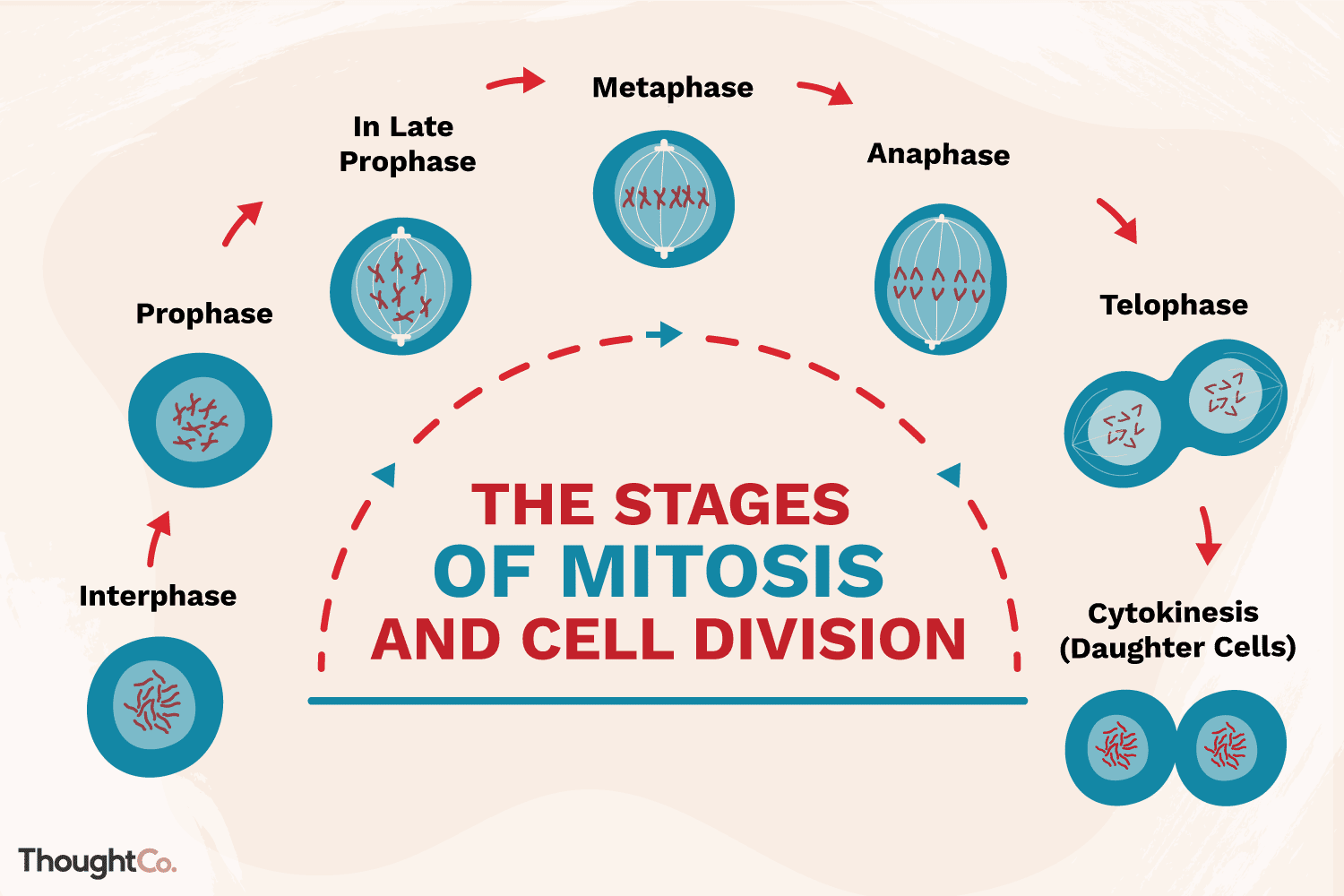
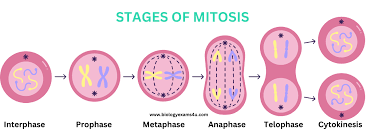
Stages of Mitosis
[…] is the period between cell division where the […].
Interphase is the period between cell division where the DNA replicates.
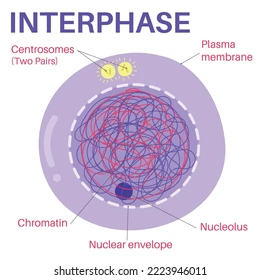
During […], separate […] become visible, with each chromosome comprising two […].
During prophase, separate chromosomes become visible, with each chromosome comprising two chromatids.

In […], the […] breaks down and spindle fibres extend from the cell’s […], aligning […] along the […] in preparation for separation.
In metaphase, the nuclear membrane breaks down and spindle fibres extend from the cell’s poles, aligning chromosomes along the equator in preparation for separation.
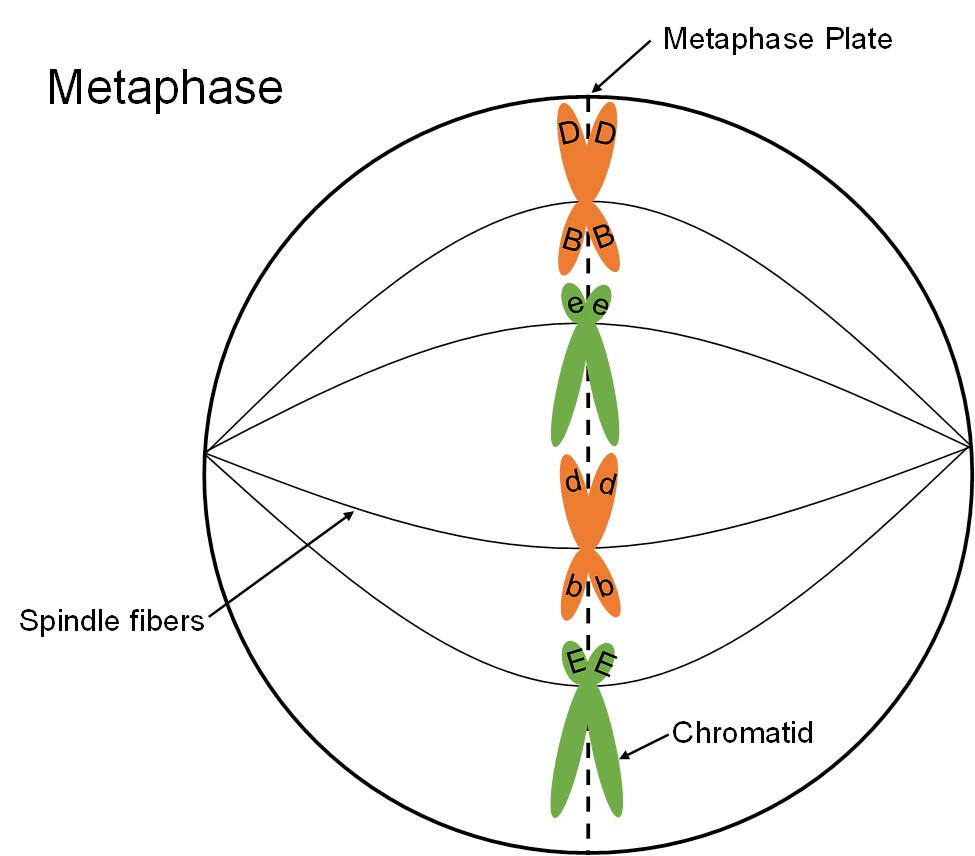
In […] , the chromatids are […] as spindle fibres […], separating each chromosomes and drawing them towards […] poles of the cell.
In anaphase, the chromatids are pulled apart as spindle fibres contract, separating each chromosome and drawing them towards opposite poles of the cell.
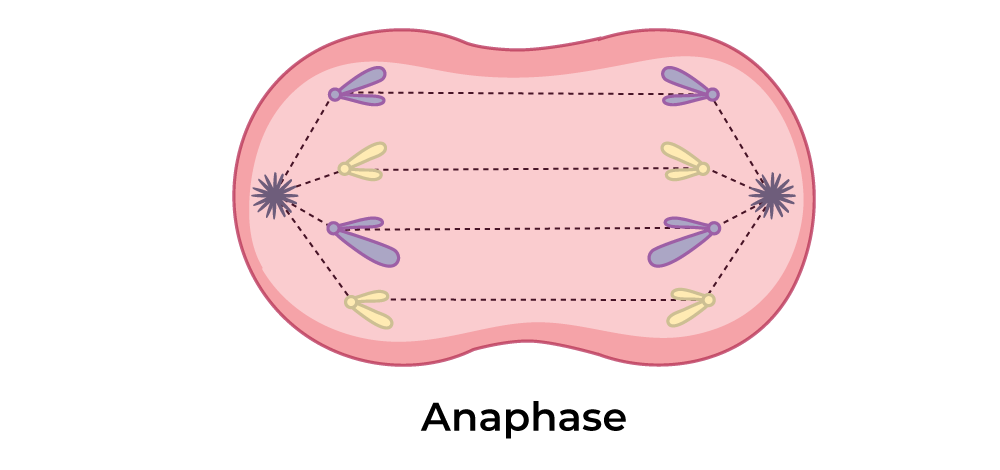
In […], the nuclear membrane reforms around the chromosomes at each pole, completing nuclear division, followed by cytoplasm division to form two identical daughter cells.
In telophase, the nuclear membrane reforms around the chromosomes at each pole, completing nuclear division, followed by cytoplasm division to form two identical daughter cells.
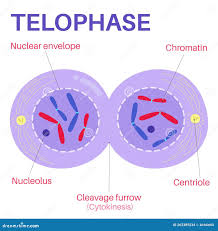
[…] is the production of […] and allows for a species to continue their existence.
Reproduction is the production of offspring and allows for a species to continue their existence.
[…] involves […] parent organisms; a male and a female from the same species.
Sexual reproduction involves two parent organisms; a male and a female from the same species.
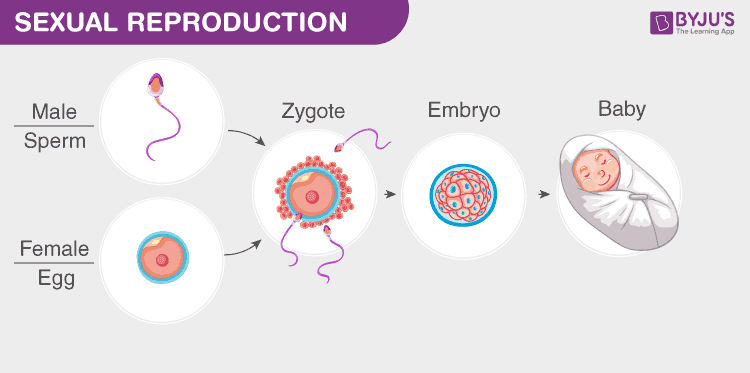
[…] only involve the genetic material of […] parent (no fertilisation or new gene). Offspring produced by asexual reproduction are genetically […] to the parent.
Asexual reproduction only involve the genetic material of one parent (no fertilisation or new gene). Offspring produced by asexual reproduction are genetically identical to the parent.
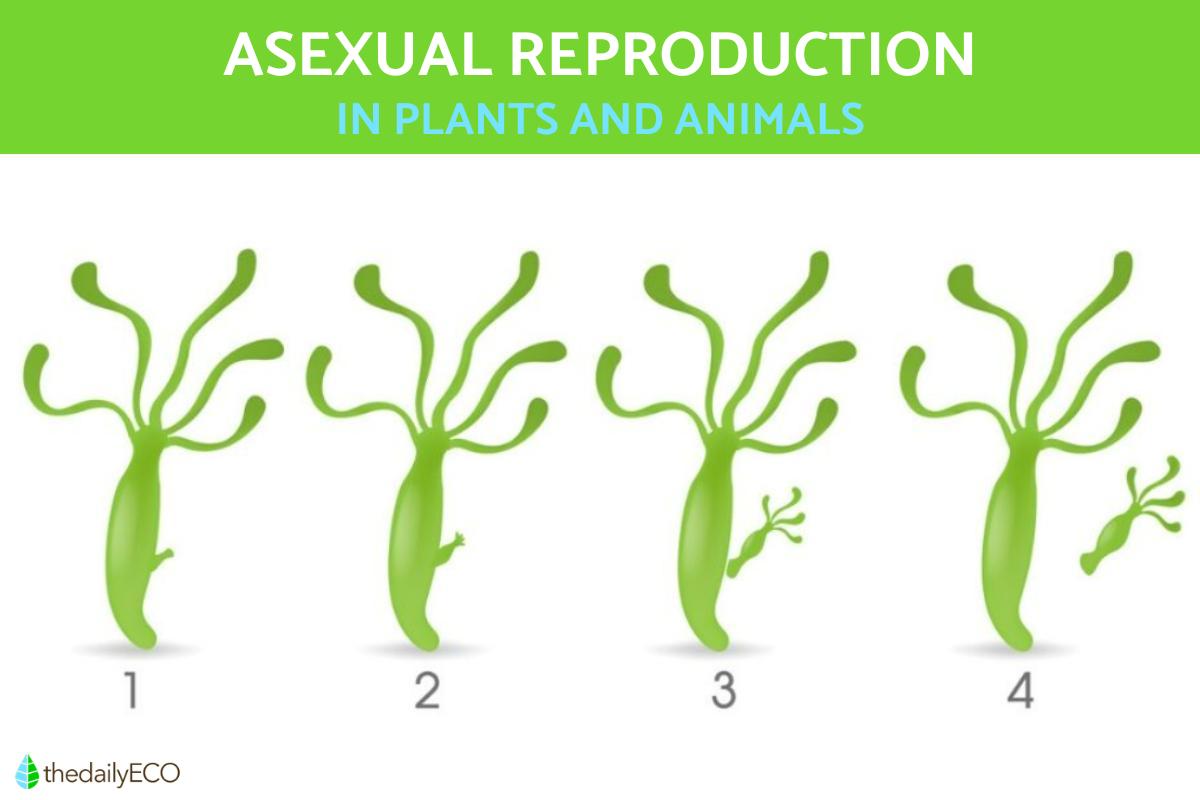
Meiosis
One original diploid parent cell divides twice to produce four non-identical haploid daughter cells.
Responsible for genetic variation in sexually producing populations.
[…] describe the differences between the […] (complete set of DNA) of a group of similar organisms.
Genetic variation describe the differences between the genomes (complete set of DNA) of a group of similar organisms.
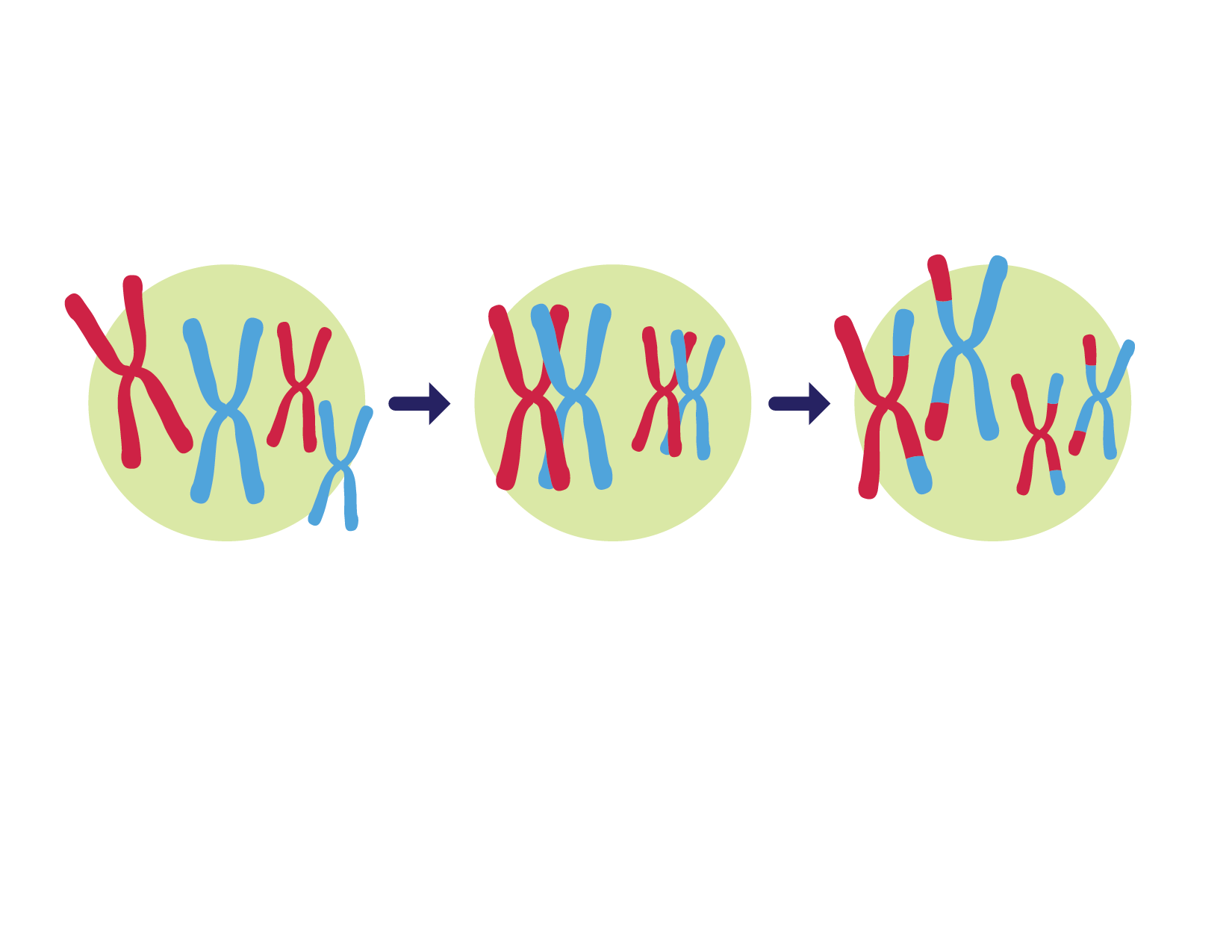
Allele
A form of gene for a special trait.
Phenotype
The characteristics that can be observed (what it looks like).
Genotype
The actual genetic makeup of an organism.
Dominant
The trait expressed even if only one copy is present in the genotype (always written as a capital letter).
Recessive
The trait expressed only if two copies are present in the genotype (written as a lower case letter).
Homozygous
When the alleles in the genotype are the same; both are dominant or recessive.
Hetereozygous
When the alleles in the genotype are different; one is dominant and one is recessive.
Punnet Square
A chart that shows all possible gene combinations in a cross of parents.